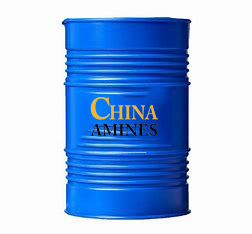1. Chemical Structure and Properties
Molecular Formula: C₅H₁₂O₃
Structural Formula: CH₃OCH₂CH₂OCH₂CH₂OH — A glycol ether composed of a methyl group linked to a diethylene glycol backbone.
Physical Properties:
Appearance: Clear, colorless liquid with a mild ether-like odor.
Boiling Point: 194°C; Density: 1.02 g/cm³; Vapor Pressure: 0.1 mmHg at 25°C.
Solubility: Fully miscible with water, alcohols, and most organic solvents.
Chemical Properties:
Polarity: Hydrophilic-lipophilic balance (HLB ~5.1).
Stability: Resists hydrolysis under neutral conditions; reacts with strong oxidizers.
Flammability: Combustible liquid (flash point: 93°C).
2. Industrial Applications
Coatings & Inks:
Solvent: Used in water-based paints and printing inks to enhance flow and drying.
Coalescing Agent: Improves film formation in latex paints.
Electronics:
Photoresist Stripper: Removes photoresist residues in semiconductor manufacturing.
Cleaning Products:
Industrial Cleaner: Effective degreaser for metal surfaces and precision equipment.
Pharmaceuticals:
Reaction Solvent: Facilitates synthesis of APIs and intermediates under mild conditions.
3. Safety and Toxicology
Health Hazards:
Acute Exposure:
Inhalation (≥10 ppm): Respiratory irritation, headache (TLV-TWA: 10 ppm).
Skin Contact: Defatting action causes dermatitis (rabbit skin LD₅₀: 2,000 mg/kg).
Ingestion: Moderately toxic (oral LD₅₀ rat: 3,000 mg/kg).
Chronic Effects:
Reproductive Toxicity: Linked to developmental defects in animal studies (EU CLP: H360D).
Hematotoxicity: May suppress bone marrow function with prolonged exposure.
Protection Measures:
PPE: Nitrile gloves, vapor respirators, chemical goggles.
Storage: Inert containers away from oxidizers and heat sources.
4. Environmental and Regulatory Compliance
Environmental Impact:
Aquatic Toxicity: LC₅₀ (fish, 96h): 50–100 mg/L; EC₅₀ (daphnia): 10–50 mg/L.
Biodegradability: Slow (OECD 301F:<30% in 28 days).
Persistence: Moderate bioaccumulation potential (log Kow: -0.5).
Regulatory Frameworks:
EU:
CLP Regulation: Classified as Repro. Tox. 1B (H360D), Skin Irrit. 2 (H315).
REACH: Restricted in consumer products (Annex XVII).
USA:
OSHA PEL: 10 ppm (8-hour TWA); EPA: Listed on Toxic Release Inventory (TRI).
China:
GB 13690-2009: Classified as Hazardous Chemical (Class 3.3).
Transport:
UN Number: UN 3082; Hazard Class: 9 (Miscellaneous Dangerous Goods).
5. Case Studies and Application Insights
Case 1: Semiconductor Wafer Cleaning:
Application: Applied Materials uses DEGME-based strippers for 7nm node wafer processing.
Performance: Achieves 99.8% residue removal without damaging silicon substrates.
Case 2: Eco-Friendly Paint Formulation:
Process: AkzoNobel replaced ethylene glycol ethers with DEGME in low-VOC architectural paints.
Result: 25% reduction in VOC emissions while maintaining coating durability.
Comparative Analysis:
DEGME vs. Ethylene Glycol Monobutyl Ether (EGBE):
Pros: Lower volatility, better water solubility.
Cons: Higher reproductive toxicity compared to EGBE’s milder profile.
Specifications:
Diethylene Glycol Monomethyl Ether is a clear, colorless glycol ether (≥99% purity) with a boiling point of 194 °C, density 1.02 g/cm³, excellent solvency for coatings, inks, and cleaners, and low VOC emissions.


